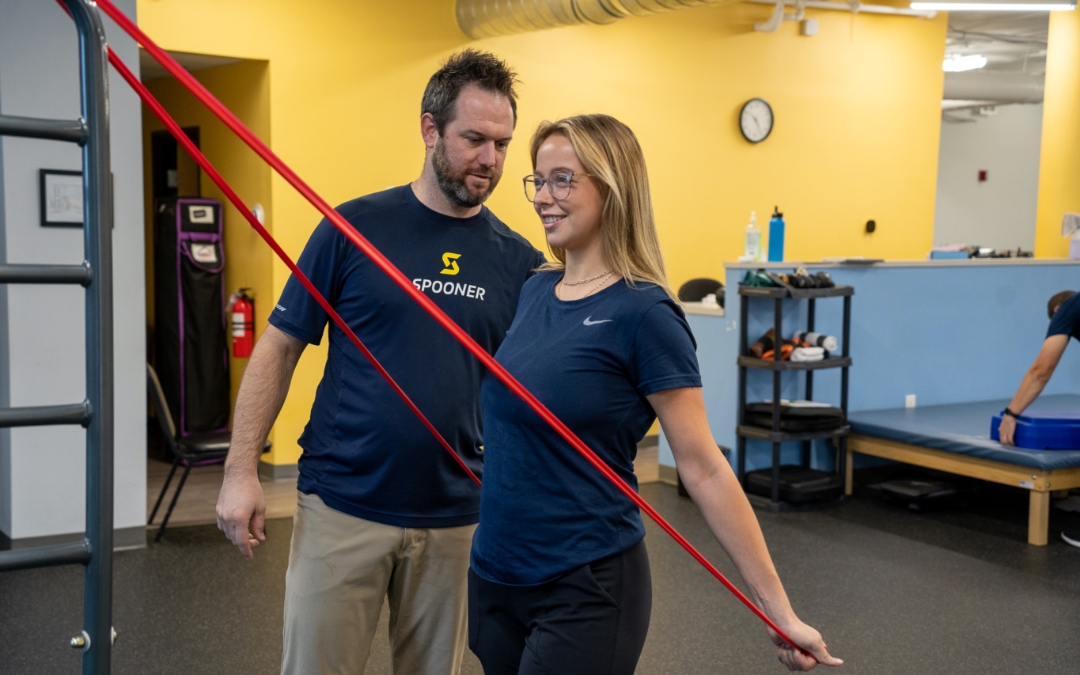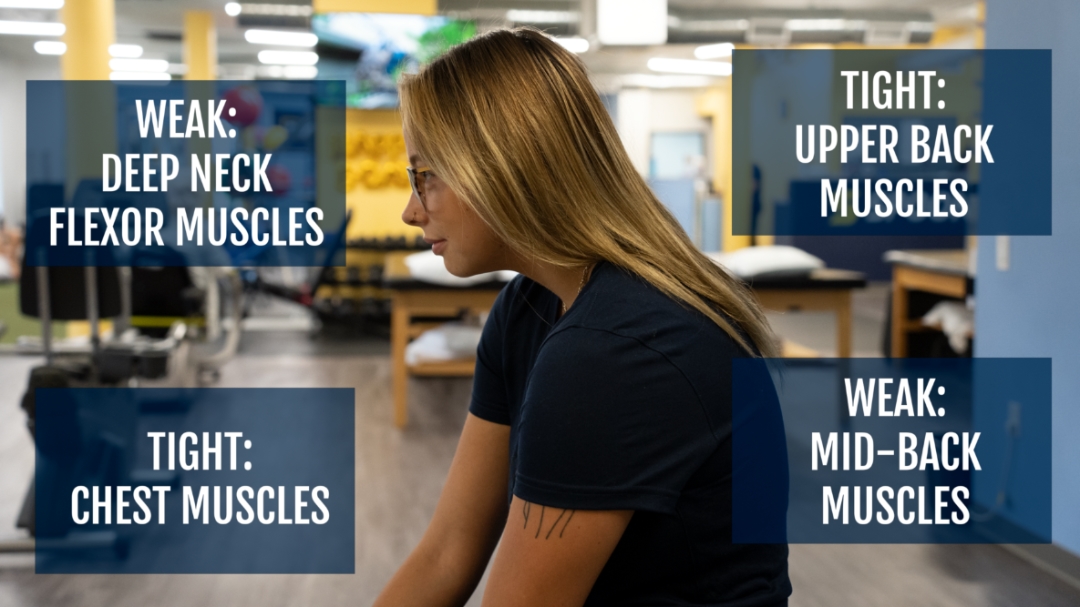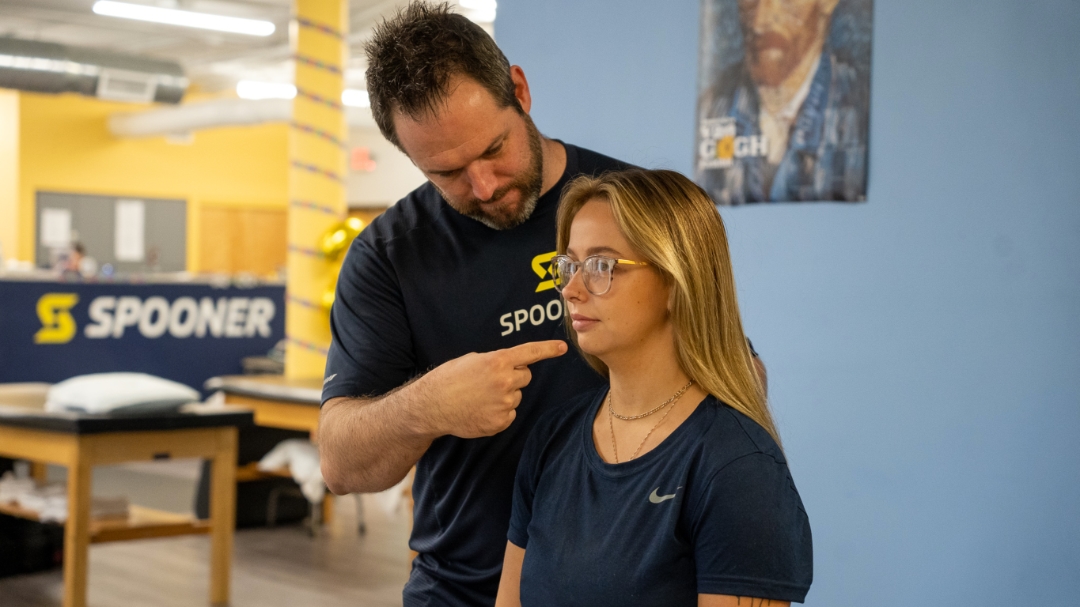By: Paul Arthur, PT, DPT, SCS, COMT, ATC
Think about how you sit at a desk, in the car, or on the couch scrolling on your phone. Your shoulders are possibly rotated forward, creating a hunched back, and your head in a forward position. When you sit at a desk all day, weakness and tightness lead to this curve.
There is a large correlation between those who work desk jobs and people with complaints of neck and upper back pain and weakness. Even with an ergonomic setup, you may be leaning into your computer. This can take a toll on your spine.
How Hunched Posture Affects Your Body
The front muscles (pectorals) and upper back muscles are tight, and your deep neck muscles and mid-back muscles are weak. This leads to a lot of strain on the neck.
There is no such thing as perfect posture, though. What is necessary is for your back muscles to be engaged and for habits to form for you to be aware of your body in space as you are sitting at your desk. Getting out of the hunched posture for a few moments each day to build up your posterior muscles can help relieve some discomfort and improve your posture over time.
1-Minute Desk Exercise Circuit to Help Your Posture
Every 20-30 minutes, this circuit at your desk can help. You can keep track on the clock or you can set a timer on your phone to cue you to check your posture.
1) First, imagine a string attached at the very top of your head and pretend someone is pulling that string up. This will help you take on a taller posture and avoid the hunched position.
2) Second, perform cervical retractions, also known as chin tucks. This is driving your head straight back. Think chin back, not top of head back. You’ll be able to feel the muscles working in the back of the neck and head. Hold the retraction for 5 seconds and relax. Complete 5 times.
3) Finally, sit up tall and place your palms on your lap. Slide your hands towards your pockets and pinch the bottom of your shoulder blades together. Squeeze the shoulder blades for 5 seconds and relax. Perform this exercise 5 times.
Want to learn more easy exercises that help strengthen shoulders and improve upper-boy posture? Read Are Hunched Shoulders Causing You Pain on the Spooner blog for a deep dive into hunched shoulders.
This circuit should take you about 1 minute to complete, and then you go back to work! Set the timer again for 20-30 minutes, and check in with your posture again with these exercises. Over time, performing these exercises will help your posterior muscles be more engaged. If you don’t have a minute to spare at work, just check in every half hour while at work and imagine the sting pulling at the top of your head. That will help you build the endurance of your back and neck muscles which will lead to a taller posture over time.
Seek Out a Physical Therapist for Posture Help
At physical therapy, we can add exercises to target specific muscles that either have more discomfort or are weaker for you. We can work to help you relearn postural awareness, minimize pain and discomfort, mobilize the joints of your back and neck, and strengthen the supporting muscles.
If you want to work on your posture to avoid further discomfort or pain down the road, schedule an appointment with a Spooner therapist today! We want to help you feel better and move better!



